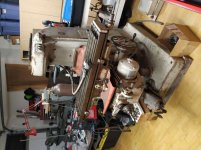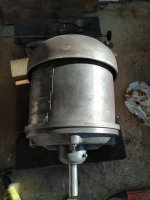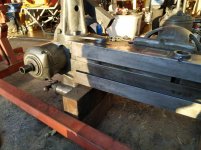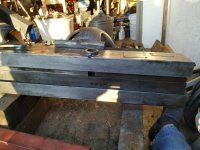jpitz31
Plastic
- Joined
- Nov 23, 2019
- Location
- Escondido, CA
Just picked up a Gorton 9J, Have a question, not sure if I should place question in Kearney Trecker, group or not, my mill is older than when Kearney Trecker purchased Gorton.
Anyway, I am trying to remove the front pulley, have removed all above pulley hardware, notched nut, bolts, Draw bar etc. Cannot remove the pulley. I have the on-line docs and they are not much help.
Has anyone removed this before? Next step is to try to lower the spindle and attempt to follow the procedures to remove the spindle.
I do not want to force anything, Parts are long gone.
Thanks
Joe
Some images:


Anyway, I am trying to remove the front pulley, have removed all above pulley hardware, notched nut, bolts, Draw bar etc. Cannot remove the pulley. I have the on-line docs and they are not much help.
Has anyone removed this before? Next step is to try to lower the spindle and attempt to follow the procedures to remove the spindle.
I do not want to force anything, Parts are long gone.
Thanks
Joe
Some images:















